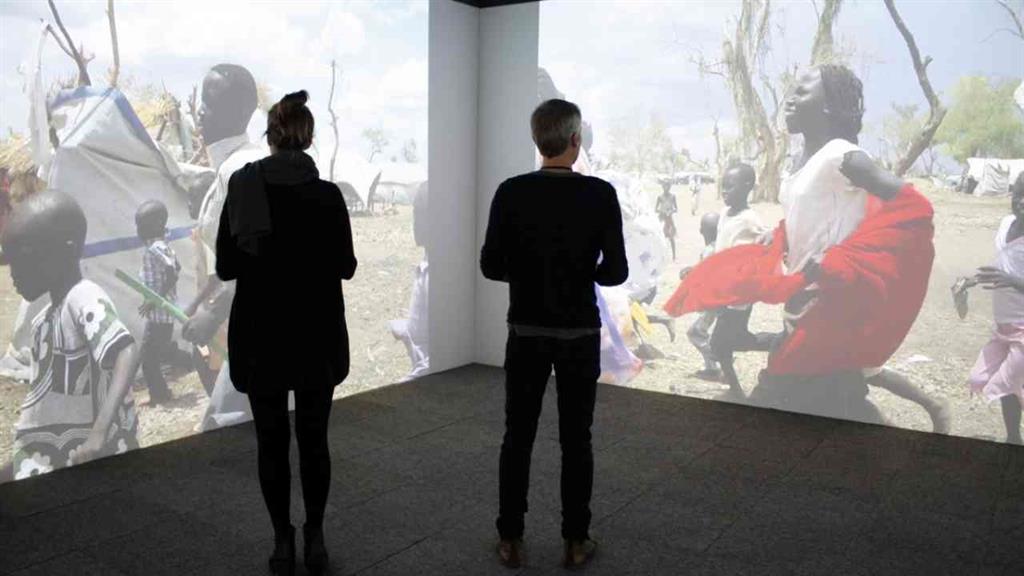Electrosonic Provides for Chicago Exhibit

- When the Museum of Science and Industry, Chicago was planning its newest permanent exhibit, Future Energy Chicago, it turned to Electrosonic to provide the audio and video systems for the exhibit’s film and simulation game, which challenges guests to compete on teams to make wise energy choices for a more sustainable city.
Exhibit-goers begin by rediscovering the nature of energy in the dynamic Energy Garden area, where they can transform energy from one form to another via a series of electro-mechanical devices and immerse themselves in a short film that dramatically presents the story of energy in our world. Guests then convert their knowledge into action via a multi-player simulation game in which they design an energy-saving car, house, neighborhood, transportation system and city power grid.
Electrosonic teamed with exhibit designers Evidence Design, interactive designers Potion Design and Steve Haas Acoustics (SH Acoustics) to meet the goals of the museum with the given budget and allotted exhibit space. Electrosonic’s Design Consulting team was involved from the outset to ensure the smooth performance of all the interactives and to supply the custom programming required to deliver an informative and fun guest experience.
The first challenge was retrofitting the existing Energy Garden space with a 20-foot wide curved oval screen to display a 6-minute film from Donna Lawrence Productions. “To satisfy the size of the imagery, we had to pay extremely close attention to the lights and speakers and accurately position everything, including the Barco 3-chip DLP projectors, on the existing grid in a low-ceiling room,” says Electrosonic design consultant Yiannis Cabolis.
Electrosonic also provided the video processing and masking to accommodate the oval screen; the film is fed to the projectors by a 7thSense server. Tannoy speakers are housed above and behind the screen along with Bag End subwoofers.
Guests to the Energy Garden get to play with various electro-mechanical devices to create “energy” —for example, riding a stationary bike will turn on a light. A pathway leads to the simulation area where the guests form teams and set off to play games at five different interactive stations. Panasonic LCD monitors are configured to form the Future House station with sides and a roof, which offers a range of multi-touch interactives with localized audio. The Future Neighborhood game extends the residence concept with more multi-touch interactives.
Future Power illustrates the need for a smart mix of energy on a round table with three overhead Panasonic projectors, while the Future Transportation game is laid out on a polygonal table with two overhead projectors above. Future Car invites guests to design a new vehicle by video mapping images from Panasonic overhead projectors onto a trio of small three-dimensional car models. All of the overhead projectors feature gesture recognition. A 24 by 8-foot scoreboard keeps track of the teams’ interactive gameplay; a pair of edge-blended Barco 3-chip DLP projectors and Tannoy speakers display the scores and announce the winners.
“Electrosonic, Evidence Design and Potion Design did a huge mock up with multiple projectors and media at the museum to determine the pixel sizes and equipment brands to use so the average guest would have a very good experience,” Cabolis explains. Samsung displays and PQ Labs overlays were chosen for the touch interactives with James loudspeakers for audio.
A daily selection of the top stories for AV integrators, resellers and consultants. Sign up below.
Custom programming was required “because each interactive had to talk to the gaming computers in the equipment racks,” he notes. Medialon show control keeps track of the Energy Garden film and the gaming computers to ensure a good pace and flow of visitors moving through the exhibit. Staff facilitating the experience are equipped with Apple iPads as interfaces to control certain operational aspects of the exhibit, such as pause, stop and reset.
Wireless mics allow facilitators to address students and general public guests, and also allow other staff presenters to lead special events in the space. Q-Sys handles multi-channel DSP. SH Acoustic’s expertise guaranteed that audio would be directed to players and support the content of the interactive simulation without intruding on adjacent games. “We didn’t want the space to sound like an arena,” Cabolis says.
During the project, “infrastructure planning was a major challenge,” he notes, with a lot of technology squeezed into a very tight area. “Ninety percent of the connections utilize fiber,” says Cabolis. “For the simulation game, we had to hide technology in the tables to deliver a clean final look. All the wires and network connections had to come up from the slab floor through a box on the bottom of the tables and through the legs to the exhibit level. And the power supplies and extenders all had to be vented, serviceable and accessible from the equipment room.”
The AVNetwork staff are storytellers focused on the professional audiovisual and technology industry. Their mission is to keep readers up-to-date on the latest AV/IT industry and product news, emerging trends, and inspiring installations.
